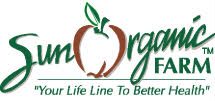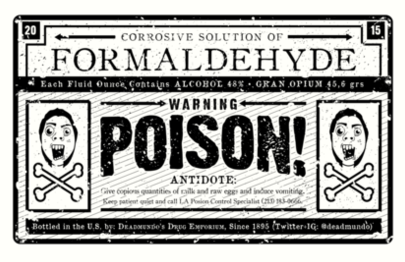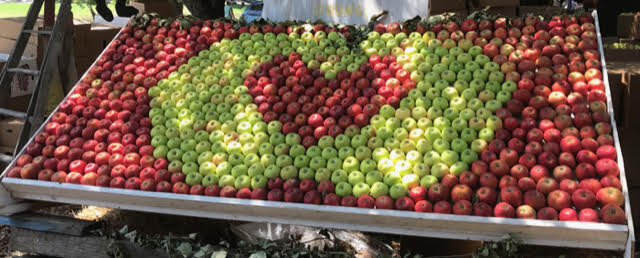
Art | Resources
Is Your Head Spinning? How A Simple, Natural Adjustment Handled my Vertigo in Half an Hour

Vertigo is like the Tilt-A-Whrl ride at the amusement park. Your environment is spinning around and around and up and down at the same time. But you can’t choose to get on the ride or get off. It’s totally out of control.
Last week I ended up in the Emergency Room after I woke up at 3 am with the room spinning violently. nausea, and sweating. By morning I still couldn’t walk or drink or eat without vomiting, so Larry took me to the Emergency Room.
After a day of tests the doctors said I was suffering from vertigo. And because I knew nothing about vertigo, I want to share with you what I’ve learned.
First, there are apparently different types of “dizzy.” When I said, “I’m dizzy,” the doctor asked. “Are you lightheaded or is the room spinning?” Ah, that was very clear. I had experienced lightheadedness in the past, which is a feeling you are about to faint when you stand up too quickly or take too many deep breaths. This was different. I was experiencing “room spinning.” If you’ve never experienced this, you will recognize it if you ever do, now that you know it’s a condition.
Vertigo is a feeling of motion when there is no motion. It’s like that amusement park ride called Tilt-A-Whirl where the platform goes around but it also tilts. It’s violent. You can’t stand up. It’s very much like being in a little boat in stormy seas. Everything is moving and you can’t control it. You just hold on.
CAUSES OF VERTIGO
Vertigo can be the result of a number of causes. It’s not a disease, it’s the result of a condition.
When I came to the Emergency Room the first thing they did was hook me up to an IV to start hydrating my body. Because “very common cause of vertigo” is dehydration. And, in fact, my body was dehydrated. Over the course of the day they gave me five bags of saline. [Just as an aside, when I woke up with the room spinning I grabbed Larry, who was lying next to me, screamed “the room is spinning” and then immediately asked repeatedly for water until he brought it to me.]
But it can also be caused by alcohol, epilepsy, heat stroke, hypothermia, insulin, shortness of breath kidney failure, trauma, infection, stroke or poisoning.
Clearly the doctors could see I had vertigo, but they didn’t know the cause. It could be anything from dehydration to kidney failure.
By the end of the day they had given me emergency medications to stop the dizziness, which I was grateful to have, but that’s all. They gave me a prescription for a drug to stop the dizziness, but didn’t tell me anything about how to prevent dizziness in the first place. So I had to do my own research.
By this time I had been told that a common cause of vertigo is a disturbance in the vestibular system of the inner ear. Herein lies the body’s balance system that tells you which way is down and senses the position of your head. It is filled with little crystals. During the course of life, the little crystals can move out of their location and then no longer function to balance. This can be caused by many factors.
So I suspected that dehydration may have triggered the attack, but it seemed like there were other factors.
VERTIGO AND TOXIC CHEMICALS
First I wanted to know if vertigo could be the result of by toxic chemical exposure (of course). So I looked that up. And actually there are associations between vertigo and industrial chemicals. There is even a word—ototoxic—that refer to chemicals that affect functions that belong to the ear, including hearing and vertigo. An audiologist recommends people should protect themselves from hydrocarbon, asphyxiant and heavy metal exposure.
- Hydrocarbons are basically any substances made from petroleum, particularly those that are volatile, such as paint fumes, synthetic fragrance, cleaning products, and the like
- asphyxiants are a gas or vapor that can cause unconsciousness or death by suffocation due to lack of oxygen. Carbon monoxide, methane and propane are all iasphyxiants.
- Heavy metals include lead, arsenic, mercury, chromium, and others.
So if you are creating a toxic-free home, you are also helping to prevent vertigo, or improve your vertigo if you have it.
MY TYPE OF VERTIGO AND WHAT I’M DOING TO END IT
After the doctors ruled out that my vertigo was not from a brain tumor, kidney failure or many of the other possible causes, I began to observe what made the spinning start and stop.
Once my body became more hydrated, the spinning lessened enough that I could observe the spinning stopped when I was laying down and started again when I sat up or stood up. It would also start when I would turn my head from side to side while lying down. And so I began to see that my vertigo was related to position, so it made sense that the problem was those little particles in my inner ear being out of place.
There seem to be standard chiropractic adjustments that can be done, but one of my readers sent me an article and video about a simple procedure I can do at home. It was developed by a ear, nose and throat doctor. She said none of her patients she has given it to ever came back for further treatment.
I have been doing this once a day almost daily for almost a week and every day I have less vertigo. As I write this, I have no attention on vertigo as I go about my day. Last night it was only slight as I got out of bed. I’m going to continue to do this procedure every night until I no longer have any vertigo.
CBS DENVER: Colorado Doctor Finds Way To Treat Common Vertigo
This video also has a really good explanation of what is going on with the particles in the inner ear that are causing vertigo.
I’ve concluded that there are natural ways to control vertigo and possibly even eliminate it altogether. Now I don’t have to be concerned about it and can get on with life.
To Live Toxic-Free is a Basic Need of Life

Each of us has our own unique reasons for wanting to choose toxic-free products. But I just discovered that in addition to our individual motivations, collectively as human beings we actually have a deep need to protect ourselves from the harm inherent in toxic chemical exposure.
There is something you may already be familiar with called Maslow’s Hierarchy of Needs . It was first proposed in 1943 by Abraham Maslow, a psychology professor at Alliant International University, Brandeis University, Brooklyn College, New School for Social Research, and Columbia University. His work stressed the importance of focusing on the positive qualities in people, as opposed to treating them as a “bag of symptoms,” His Hierarchy of Needs theorizes that human beings are motivated by an urge to fulfill basic human needs beginning with such basic needs as food and water and culminating with being fully themselves. Above is a diagram of his original hierarchy, but later in life Maslow expanded the model to include other needs as well.
I’ve known about Maslow’s Hierarchy of Needs for many years, but looking at them again recently I noticed that we all have a need to be SAFE, and that is so basic that it comes right after our need for food, water, warmth and sleep. Included in that need are health and well-being, and to be safe against accidents and illnesses and their adverse impacts.
We’re actually “wired” to resist that which might harm us.
When we choose toxic-free products we are fulfilling oura basic human need to be safe.
More and more it is becoming clear to me in my own life the importance of having these “bottom of the hierarchy” needs securely in place. These are the necessities of life. Without them the nourishment of food and the hydration of water we can do nothing. Filling these foundation need of biological necessities and safety, we then have a firm foundation for life on which we can build to live the life of our dreams.
Air Pollution Causes a Huge Reduction in Intelligence

According to a new study, “air pollution causes a “huge” reduction in intelligence, indicating that the damage to society of toxic air is far deeper than the well-known impacts on physical health.”
The study found that, ” high pollution levels led to significant drops in test scores in language and arithmetic, with the average impact equivalent to having lost a year of the person’s education.”
“They found the longer people were exposed to dirty air, the bigger the damage to intelligence, with language ability more harmed than mathematical ability and men more harmed than women.”
This study was done regarding pollution in outdoor air, but indoor air pollutants are similar and would have similar effects.
This makes sense to me because many chemicals are known to affect the central nervous system and in doing so affects brain function.
Again, another reason to remove sources of indoor air pollution from your home and have an air filter on hand and available when needed.
THE GUARDIAN: Air Pollution Causes “Huge” Reduction in Intelligence, Study Reveals.

Sun Organic Farm
 This is your basic bulk organic foods–grains, beans, dried fruits, coffee, nuts. All ingredients, not packaged food products. But what a selection! You’ll find things here you won’t find at your natural food store. Many varieties of beans and dried fruits, and “a grand selection of high quality certified organic herbs, spices and seasonings”–99% of everything on this site is certified organically grown.
This is your basic bulk organic foods–grains, beans, dried fruits, coffee, nuts. All ingredients, not packaged food products. But what a selection! You’ll find things here you won’t find at your natural food store. Many varieties of beans and dried fruits, and “a grand selection of high quality certified organic herbs, spices and seasonings”–99% of everything on this site is certified organically grown.
How Toxic-Free Do I Need to Be?

This post has been coming on for weeks. But you know, sometimes you have to watch things unfold and then you have the big realization. I finally had the big realization over the weekend, so finally I can post this post.
It started with an interesting conversation during a consultation.
A woman wanted me to look at several products she was considering purchasing, give her my opinion about how toxic they are, and if they did have some toxic exposure, could she still use them since she had an EnviroKlenz Mobile Unit air purifier.
I just want to share my reply with all of you.
First, I actually think everyone should own an air filter. I used to not think this, however, since going through the big fire last fall and also living in an area where smells of all kinds come wafting by even though the air is generally very clean, I do think that it’s wise to have an air filter on hand in case it is needed. [Weeks after I wrote this, I finally purchased my own EnviroKlenz Mobile Unit after the wind shifted one day and we got a lot of smoke from this year’s fires.]
The general recommendation for good indoor air quality is to start by reducing pollutants at the source. Which means, remove any products you can that are contributing to indoor air pollution with products that are not polluting. Even if you have an air filter, it’s best to reduce the amount of pollution it needs to filter, as your media cartridges will last longer.
Another caveat I just want to mention is that filtered air is not the same as natural air. It’s better to breathe filtered air, but the best air is clean natural air. There are just other factors to natural air that are not present in the filtered air. So if you are in a situation where you need to be breathing filtered air, get out in nature whenever you can. Even I, living where I do in an area where there is very clean air, I still drive out to the ocean that has very very clean air full of negative ions and other beneficial factors. I call this “live” air.
So then there is the fact that when you are filtering air or reducing indoor air pollutants at the source, you are only doing this at home. Once you step out your door, you are out in the toxic world, breathing toxic air. Toxic in varying degrees depending on where you live and if you are driving in traffic or walking on a store, etc. But almost anywhere is likely to be more toxic than your home.
I explained to my client that there are several levels of how to consider toxic exposure.
- At the most immediate level you would look at a product and evaluate the materials it is made from to see to what degree they may be toxic. A product might be completely toxic-free, or have one toxic ingredient or several, or the toxicity may be low or high.
- Then there is the amount of toxic exposure you get overall in life. You have your home, which might be zero toxic like mine or some percentage toxic, and then there is “beyond home” which is certainly more toxic. And you might spend different percentages of time there. I would say that for me, I spend more than 50 percent of my time in my home and even when I go out I’m in a clean air place and there are few toxic exposures in the natural food store and the farmer’s market and other small shops and restaurants I usually go to. But for other people, it might look like 50% at home during non-work hours, then sitting in traffic, then working in a toxic office building. After I created a nontoxic home many years ago my next steps were to move out of the city into a forest and create a home-based business so I wouldn’t have to community or work in an office building.
- And then you need to consider your own level of need. If you have MCS, you really need your home to be as toxic-free is you can possibly make it. If you want to reduce your toxic exposure for other reasons, you have a little more leeway.
You don’t have to reduce your toxic exposure 100%. It’s impossible anyway. Our bodies have detoxification systems that can handle a certain amount of exposure. The problem is they get overloaded. And as we reduce our exposure, our bodies continue to detox and health gets better because the amount of exposure we have begins to be more in line with what our bodies can handle.
So this really is individual for everyone.
The big question my client wanted to know was could she buy furniture she liked that had some toxic elements to it because she was running her air filter.
I told her in my home I wouldn’t do that but it’s a process. You don’t create a toxic-free home overnight. An air filter can be a great tool while you are transitioning because it WILL remove a lot of the pollutants being created by your carpet and your bed and your particleboard kitchen cabinets and all those other things until you learn what’s toxic in your home and can replace them.
But I also understand her desire to have things that are the style that she’s accustomed to. It was an adjustment for me to stop wearing the fashionable clothes I was accustomed to. My red lipstick was one of the last items to go because 40 years ago they didn’t have all the pretty colors of natural lipstick we have now.
In the end we decided that having a few items in her house that were somewhat toxic (but not the worst offenders) would be OK with her air filter running, We just looked at the fact that she is being exposed to toxics outside of her home and put those products on the side of the ledger with the “beyond house” toxic exposures.
It all comes down to what you need to do or what you are willing to do, and what you can afford to do.
My commitment is to reduce toxic exposures as much as I can and I will be as creative as I need to be, spend whatever money I need to spend, do whatever research I need to do and go to any lengths to minimize my exposures to the max. But I also choose to go out in the world and fly in airplanes and sleep in hotels and eat in restaurants. And then I come home to my toxic free environment. It’s a balance.
In a way, my client choosing her sofa for comfort even though it may still contain some toxic components is much like me going out into the world. It’s an “informed exposure”—a risk we are willing to take, like crossing the street.
It all comes down to balance. Toxics in, toxics out. Our bodies will process a certain amount. Don’t overload. If you’re exposed, then spend time away from toxics so your body can detox.
An air filter can help achieve that balance.
* * *
In the weeks that followed I had other similar questions.
But there’s a variation on this theme, and that is the so-called “nontoxic” certifications that certify that the product has passed certain tests and therefore are safe. You’ve seen them: GREENGUARD, MADESAFE, Oeko-Tex 100, Floorscore, the CARB standards for formaldehyde…and the like.
The problem with these certifications is
- they are only testing a limited number of chemicals and
- they are testing these chemicals down to a level
But that doesn’t mean that they are testing all the pertinent chemicals for that particular product and it doesn’t mean that they are testing down to the level that is acceptable to your particular body.
From my viewpoint, there is a false sense of security. Consumers look at these seals and think the product is “not toxic.” But not toxic by what standard? And what else might be in the product in addition to what is tested, which is not tested?
Just this morning someone sent me info on the “healthiest” carpet pad made of GREENGUARD-certified memory foam. No, I would not recommend that.
But these certifiers seriously think that these products are OK because they are “lower emissions” than other similar products.
Better. But better enough?
* * *
 Then this week another woman was asking me about remodeling her kitchen and replacing kitchen cabinets. And then someone commented on her question and said he was living with toxic kichen cabinets too because he couldn’t afford to replace them. I’m thinking about all this and then…
Then this week another woman was asking me about remodeling her kitchen and replacing kitchen cabinets. And then someone commented on her question and said he was living with toxic kichen cabinets too because he couldn’t afford to replace them. I’m thinking about all this and then…
Over the weekend Larry and I were driving to a different farmer’s market than we usually go to because I wanted to buy some organic olive oil directly from the farmer. For all the fake olive oil on the market, I am fortunate to be surrounded by producers of olive oil. I can go walk in the groves if I want to, I actually drive by some of these groves on a regular basis, so I know where the olives and the oil come from.
So we were driving and I suddenly remembered that when I first learned that toxic chemicals in my home were making me sick, my first instinct was to remove all the toxic chemicals from my room. I was living with my father at the time, so I only had control over my bedroom. But I took all my polyester clothes out of the closet, removed all my books, removed my furnture, my bed and my mattress and all my bedding. I pulled up the carpet. All that was left was four walls and a cement floor with dried paint spatters all over it.
I was not concerned with how it looked. I was concerned with getting my body away from toxic chemicals. It was only later that I learned that in every case of poisoning the first step is to get the person away from the poison or get the poison away from the person.
It takes exposure to a poison for it to cause a poisoning. I know that sounds obvious, but it is forgotten every day. And “toxic” is just another name for poison.
So when I speak to you, my viewpoint is wanting not to reduce your exposure to toxic household products. I want to eliminate your exposure to toxics in your home. Just as I did in my own home. Just as I continue to do every day.
The goal is zero toxics.
That doesn’t mean I actually achieve this goal every moment of every day. But any time I can eliminate a toxic exposure—by any means—I will. That includes leaving a place if necessary, removing things if necessary, ending relationships if necessary…
And that’s really how I feel about how toxic-free I need to be. How toxic-free you need to be is up to you.
* * *
I want to make one more point.
We talk about “toxics” but in actuality toxic chemicals are poisons.
There are two types of poisons: acute and chronic.
Acute poisons cause immediate symptoms and are the reason for poison control centers.
Chrinic poisons create health effects over time, after being exposed day-in-and-day-out.
Let’s take formaldehyde, for example. Formaldehyde has been in use for a long time.
Here is an early warning label for formaldehyde what would have appeared on a bottle of formaldehyde:

Here are some current warning labels for formaldehyde: used in a workplace setting:

Here is the warning label for formaldehyde for a consumer product such as particleboard kitchen cabinets or permanent press bedsheets, both of which are continuously emitting formaldehyde into the air in your home.

I didn’t forget to put the warning label there. There isn’t one.
The same formaldehyde that is an acute poison is also in consumer products at levels that act as chronic poisons when you are exposed to them day after day.
This is what we are dealing with.
Years ago when I was very sick from toxic chemical exposure and struggling to get well, I kept eliminating exposures and eliminating exposures and still wasn’t getting well. But I wouldn’t give up my perfect shade of red lipstick. And finally I decided OK I have to do this. And that was it. It was the last exposure I needed to breakthrough and stop overwhelming my body. I’ve seen this over and over where there is one thing someone won’t give up and when they remove that exposure their health turns around.
The moral of this story is: eliminate as many toxic chemicals as you can.
My order of priority is: first, toxic-free, then functional, then beautiful.
I always choose the least-toxic option available. When I’m at home, I pretty much eat organic, for example. When I’m traveling I’ll seek out organic but it may not always be available. So then I’ll eat food with pesticides, knowing they will leave my body within a few days. But I never eat junk food. I just don’t eat if all there is available is fast food. That’s just one example of my level of choice.
Again, we each need to make our own choices about the degree of toxic exposure that is necessary to have good health or prevent toxic harm in our own bodies. Lots more information that will help you make these decision will be coming soon when I launch my new website Zero Toxics at the end of September.
My Temporary Toxic-Free Corner Kitchenette

A few days ago a reader comments on last week’s post Thermafoil Kitchen Cabinets and Offgassing saying:
I feel duly chastised. We too, moved into our home and didn’t check the cabinets.
We removed old carpet throughout entire home which cost a fortune to redo with tile. We completely re-did (3) toxic bathrooms, and removed tons of toxic cabinetry from the garage which was being used as a workshop. We simply ran out of money.
After we moved in, I discovered the previous owner had put these kitchen cabinets in himself approx. 5 years prior. When opening the cabinets I saw that the back part looked thin and like an mdf. Yes, mortified…
But kitchens are expensive to remodel and we had to stop somewhere.
When finances permit, I’d love to rip out these cabinets. In the meantime, I’ve gotten better living here so I will go out on a limb and say I don’t think I’m being too poisoned by them. Hence, we air out the house often and use air purifiers. For now, it has to suffice.
And I replied:
For me (and I’m not saying you have to do this), I have always operated on “get rid of the exposure first and then figure out how to replace the item with something nontoxic.” Even if that means not a beautiful kitchen, but just a make-do one.
As I’ve written before, currently I’m living with Larry’s family, helping to care for his 85-year-old mom after her husband’s death last year. She’s totally happy to share her kitchen with me, but the logistics just weren’t workable. I’m using a room in a separate building on the property for my office, and Larry built a kitchen for me in the alcove.
Perhaps “kitchen” is not exactly the right word, but it’s a food preparation area with a sink unit I got from IKEA, an apartment-size refrigerator, an island with a butcher-block top and an induction burner. I prepare most of our food here. And some used wood shelves. Investments was less than $500 and all totally nontoxic. Mostly used.
So if it were me, I would rip out your toxic kitchen and be safe, and rebuild as you can afford to.
I’ve been wanting to write about my kitchen but it’s not quite done (needs some sufficient lighting and a beautiful spice rack is in progress from Larry).
Larry put this together for me on a shoestring budget in an alcove of a room we share for an office.
We started with a wall unit from iKEA that has a sink, countertop and shelf, under $200. I’d give you the link but couldn’t find it online so maybe they are no longer selling it.
Then we installed some wooden shelves above. We just got the brackets and wood shelving at a local hardware store. No finish.
We had to do some plumbing to connect to the pipe on the other side of the wall.
We got a used apartment-sized refrigerator in perfect condition (outgassed) from a young couple who were moving and had to sell it that day. $50.
It’s sitting on top of a low wood table (you can’t see it in the picture) that was left by the roadside. Free.
The butcher block island we brought from our house in Florida. Originally about $200 from IKEA but I consider it free because we had been planning to sell it.
Around the left corner there is a tall and wide solid wood shelving unit that we got free just for hauling it away.
We already had the induction cooktop from our kitchen in Florida, and our dehydrator (which at the moment is dehydrating organic peaches from the farmer’s market), and our toaster oven. If we need a full size oven we use Larry’s mom’s oven in the main house.
All of this for less than $500. Perfect? No. Workable? Yes. And totally toxic-free.
It can be done when toxic-free is your priority.
I want to be clear this is temporary. I’ve also remodeled some beautiful full-size toxic-free kitchens.
But the point is, I make toxic-free my first priority. Always. And so my exposure to toxic chemicals is extremely low and infrequent.
New Fragrance Studies from Anne Steinemann + A Call for Ingredient Disclosure for Fragranced Consumer Products

This week Professor Anne Steinemann, who has been a champion for the elimination of scented products, has released some new studies that are very interesting
Fragranced baby products (both regular and “green”) – nearly all products emitted chemicals classified as hazardous, with no significant difference between the regular and green products.
Essential oils (both regular and “organic”) – all essential oils emitted chemicals classified as hazardous, with no significant difference between the regular and organic products.
Regulation of fragranced products – no law requires disclosure of all ingredients in a consumer product in Australia, or of any ingredients in a mixture called “fragrance”.
Here’s another paper related to fragrance from a different source. This one is about the need for more ingredient disclosure for fragranced consumer products.
And here’s another from Professor Steinemann on indoor air quality at a university:
Indoor air quality at a University – the green building had some of the highest levels of pollutants
California Fires Releasing Radioactive Particles in Smoke

As if breathing smoke itself wasn’t enough, this morning I read a disturbing personal account of one man’s measurements of radioactivity in the smoke coming from our California fires.
As horrific as this season’s fires have been so far, with all the destruction of homes and loss of lives, what disturbs me most is what I have just recorded in my logs, photos and readings. At the peak of the fires and smoke just a few days ago, the readings were significantly higher – – and not by just a little. I recorded a peak reading of 1,333 cpm on the morning of July 31st, and had multiple readings above 1,000 cpm during that period. And, none of the fires is even close to us this time. The likely source of much of the smoke here is a fire near Yosemite National Park, over a hundred miles away. I suspect heavier concentrations of smoke would yield higher results.
Has the vast bulk of the 40 million population of California just been unknowingly exposed to high concentrations of radioactive particles? What are the constituents of these particles? How hazardous are they? It was recently widely reported that radiation from Fukushima, in the form of Cesium-137, was detected in small quantities in California wines. There can be little doubt that Cesium-137 from Fukushima has also been absorbed by all the vegetation here, and when burned, is re-released.
FINDING THE MISSING LINK: California’s Wildfires and Nuclear Radiation—A Personal Story
So what do we do?
1. Filter our air during smoky times.
2. Take PureBody Liquid Zeolite, which can remove radioactive particles from your body. If all the vegetation in California is absorbing radioactive particles, then all the food grown here is absorbing them too.
Is there Glyphosate in Your Breakfast Cereal?

Following last week’s stunning news that a California jury ordered Monsanto to pay $289 million in damages to a man dying of cancer, which he says was caused by his repeated exposure to large quantities of Roundup and other glyphosate-based weed killers while working as a school groundskeeper, Environmental Working Group released the results of their testing of breakfast cereals for glyphosate.
“Glyphosate, an herbicide linked to cancer by California state scientists and the World Health Organization, was found in all but two of 45 samples of products made with conventionally grown oats. Almost three-fourths of those samples had glyphosate levels higher than what EWG scientists consider protective of children’s health with an adequate margin of safety. About one-third of 16 samples made with organically grown oats also had glyphosate, all at levels well below EWG’s health benchmark.”
I’d like to phrase this from a different viewpoint.
45 samples of conventional-grown oats:
43 samples contained glyphosate
31 of the samples had glyphosate levels higher that what is considered safe
16 samples made with organically-grown oats
5 samples contained glyphosate
all were lower than what is considered safe
This tells us that if you eat organic, it’s more likely than not that you won’t be eating glyphosate. But even if you do, it will be at levels considered by EWG to be below the safe levels for children.
EWG: Breakfast With a Dose of Roundup?
Click on link above for more about the testing and a chart of the levels found in various brand-name samples.
Beyond Toxic-Free Industrial Products

I spend a lot of my time (as you know) working on finding and writing about toxic-free, manufactured industrial products because that’s where most people shop.
But for many years now, I’ve actually been living this “other” life that is beyond industrial products. It’s the next level of living toxic-free. Much more difficult and not available everywhere, but oh so rewarding.
I actually started envisioning living this way in 1987 but gave up because I couldn’t find it. But now thirty years later…
Here’s how I spent last Sunday
I spent most of my day going to our local “farm market” (that’s what they call it here, not “farmer’s market”) and also our annual Gravenstein Apple Fair, which celebrates the harvest of the Gravenstein Apples, unique to our area.
Both of these experiences made me very happy I live here as they take my experience of toxic-free living well beyond the action of choosing products without chemicals from store shelves. They take me back to LIFE.
THE CHANGING OF THE SEASON AT THE FARM MARKET
About 30 years ago I began to study nature, and one thing I learned was about the changing of the seasons. On our civil calendar “The First Day of Autumn” has been fixed September 21, but it’s not. The Autumn Equinox that falls on that day is the middle of autumn.
I had an ancient calendar that marked a date in early August as the end of summer and the beginning of autumn and there was a festival to celebrate it. That this time of year was the end of summer and the beginning of autumn was kind of theoretical to me because it is always hot in August wherever I’ve lived, but I could see small indicators.
I’ve now been going to the farmer’s market every Sunday for almost a year, and this week, I really saw that ‘autumn is a comin’ in’. The Gravenstein apples are here, as well as Gravenstein cider and a tent telling you where you can use the community apple press to press your apples for juice. The multicolored cherry tomatoes are gone. My farmer who has been providing gorgeous cherry tomatoes and bell peppers and Persian cucumbers said good-bye to me this week. He won’t be back until January. The entire spectrum of foods in the fields is changing.
While tomatoes are ending, cauliflower is just beginning. I can’t resist these baby cauliflowers. So tender and sweet.

We don’t see this change of season in the supermarket. But it’s very real at my farmer’s market and on my plate.
We’re moving into the time of harvest. I’m working hard now to bring in the “harvest” of the work I’ve been doing all year to move my work to the next level with a new website. I can start to see the new website now. Structure is up. I’m starting to organize data. I’ve found someone to help me with the technical challenges and we were started work on that yesterday. I’m working full speed ahead.
Eating seasonal, local, organic food is part of my “practice” of living toxic-free. It goes beyond reading labels to avoid toxic chemicals in industrial products, to the next level of aligning with life itself.
For the past two weeks we’ve been sampling different varieties of peaches. We’ve been putting each variety in separate bags with their names on them to get to know them. The farmer explained how the best peaches were the first peaches picked from the outside of the tree where they get the most sun and that the following week that week’s varieties would be coming from the inner branches and new varieties would be being picked from the outside of other trees.
Imaging my surprise when I brought these peaches home and cut them open and there was a sunset of colors inside the peach! Not just white or orange, but white and orange and deep red and purple. I though I would pull a photo off the internet with these colors and couldn’t find one. But this week we bought a whole entire box of peaches, and as I was peeling peach-after-peach I discovered the deep turn of color comes from ripeness. I had just never before eaten a peach that was actually ripe. But it’s only ripe like this for moments. The next day they begin to rot.

AND THEN WE WENT TO THE GRAVENSTEIN APPLE FAIR
This was the first time I’ve been to this particular fair and it moved me deeply.
First, it was a city fair, so it wasn’t at a fairgrounds, it was in a park, under oak trees. There were local craftspeople, food tents set up by local restaurants and children showing and explaining their 4H animals, and bands providing music. The entire fair was the city in microcosm. And Gravenstein apples—apple pie baked by the ladies of a local Church who bake the pies every years, apple fritters, apple cider, boxes of apples, bags of apples—all Gravenstein everything. One food stall offered a grilled cheese sandwich made with slices of Gravenstein apple, local blue cheese and local honey. Apples, apples, apples!

Of course, Larry and I walked in an immediately bought a piece of pie to share. I looked up and everyone around me was eating pie made with our local apples, baked with the loving hands of our local women, and tears came to my eyes. This is what creates community. Once of the reasons I left Florida was because I was once told not to bring homemade food for refreshments to a meeting—only packaged foods. Sitting under the oak trees eating apple pie with my community made me feel part of the community, not only in the moment, but part of it’s history past and future.

I had to include this photo above of the disposal area. It’s more that trash and recycling. It was landfill, recycling, compost, and pig food.
But of course. This is a farming community. And so our fair had woodcarving and historic farm equipment and “agrarian games” (I didn’t see those, but I’m thinking they may be like the Scottish Highland games, which are competitions of skill based on things actually done in local work life).
Here the food is seasonal, local, and organic with full disclosure. You can’t buy Mindful Meats online. They are local. And you can call up all these farms on this chalkboard and they will proudly tell you all about how they grow and raise their food. No secrets here.

This is how life should be!!!!! Everywhere.
Enough. I think you get the idea. I feel like I’ve come home.
As we were walking to our car I said to Larry, “This fair is in agreement with me. It’s just how I would design it. And I am in agreement with it. This is where we belong.”
And he agreed.








